|
I have some further clarity on the dates of the shift from the naming of the periodical from "The Apostolic Faith" to the "Word and Witness." It looks like Bell maintained the name "Apostolic Faith" until at least mid-June 1912. Bell did not typically publicize subscription numbers other than reports on unpaid subscriptions and shortages of newspapers. Bell only reported total subscribership two times in the publication’s history. In June 1913, Bell claimed, “GOD IS GREATLY BLESSING THE PAPER EVERYWHERE, and with the help of all the workers and the Lord, we are aiming to put the paper in 25,000 homes before the summer is over. We started April one year ago (this would be April 1912), printing only 2,000, and have so wonderfully grown that for several months we have regularly gotten out 16,000, and in May we ran short, this number not being enough. For June we are printing 20,000 papers in Double size.” See Bell, “Editorial,” Word and Witness, June 20, 1913, 4. This exponential growth is perhaps the single most important factor that led to the successful formation of the Assemblies of God as well as the reason for Bell’s leadership of the movement. After the meeting at Hot Springs in April 1914, the paper planned to “get out four times as many as our best heretofore. At low figures, 75,000 have already been subscribed for and we can, if all will help, get out and send out in May a 100,000 copies.” See “Big Edition in May,” Word and Witness, April 20, 1914, 1. “Glory and Unity at the Eureka Springs Camp,” Word and Witness, August 20, 1912, 1-2. This article referenced a previously unrecognized 1911 meeting since it stated that “the attendance [at the 1912 meeting] far surpassed that of one year ago at the same place.” There is newfound evidence of a 1911 meeting in Eureka Springs. See “Camp Meeting a Success,” Eureka Springs Times, July 28, 1911, 5, Arkansas State Archives. This is the Description at the Pentecostal Archives for the Word and Witness (highlighted in bold is the subject of this post): Description: Word and Witness, published by E. N. Bell, served as the primary periodical of the Church of God in Christ, a group sometimes referred to as Church of God in Christ (white) to distinguish it from Bishop Charles H. Mason's largely-African-American organization with the same name. Most members of the Church of God in Christ (white) were located in the South and initially consisted of ministers who held credentials with Charles Parham's Apostolic Faith Movement. Sometime after mid-1907, this group of ministers left Parham to form their own organization. The new organization continued using the name Apostolic Faith Movement and its periodical continued the name and enumeration of Parham's periodical, The Apostolic Faith. In late 1910 or 1911, this group changed its name to Church of God in Christ. In 1911 or 1912, Bell changed the name of the periodical to Word and Witness. In the December 20, 1913 issue of Word and Witness, Bell published "The Call" to Hot Springs, Arkansas, which was an open invitation for Pentecostal ministers to attend the April 1914 founding convention of the Assemblies of God USA. Delegates at the first general council elected Bell to serve as chairman, and Word and Witness became one of two official periodicals of the Assemblies of God (along with the Christian Evangel. Word and Witness merged into the Weekly Evangel on January 1, 1916. Places of publication: Malvern, Arkansas (1912?-1914); Findlay, Ohio (1914-1915); St. Louis, Missouri (1915). I haven’t seen other historical references to it or a clear explanation of why Bell changed the name. The newspaper also could have called it their own name instead of the proper name Bell gave it. Newspapers in Malvern and Green Forest, for instance, favored the “apostolic faith” term over any others.
Question: How great do you think are the possibilities we find the first issues in the historical record?
0 Comments
Sometimes it is difficult to put together the pieces of information in the historical record. On December 20, 1913, five early Pentecostal voices—M. M. Pinson of Phoenix, Arizona; A. P. Collins of Ft. Worth, Texas; H. A. Goss of Hot Springs, Arkansas; D. C. O. Opperman of Houston, Texas; and E. N. Bell of Malvern, Arkansas—invited “laymen and preachers” and “all elders, pastors, ministers, evangelists and missionaries” to come to a Convention at Hot Springs in April 1914.[1] They encouraged “all the churches of God in Christ” and “all Pentecostal or Apostolic faith assemblies,” regardless of official name, to come together “in love and peace to push the interests of the Kingdom of God.”[2] [1] E. N. Bell, “General Convention of Pentecostal Saints and Churches of God in Christ,” Word and Witness, December 20, 1913, 1. [2] Ibid. Naming conventions in local, non-religious periodicals favored calling Pentecostal people terms like "Apostolic faith" or "holy rollers." Searching local newspapers in Chronicling America with search terms like this and then looking for associated names will render more successful searches and help piece together the historical record. W. E. Wilson, for instance, listed in the article above article is very close to A. E. Wilson of Pine Bluff in the December 1913 list of ministers in the Word and Witness. Is this the same person? At first glance, it seems possible, but further investigation reveals that in 1912, A. E. Wilson was out of Little Rock. We get this from looking at the hotel record from June 19, 1912 on page 5 in the Pine Bluff Daily Graphic. Cast a Wider Net
"The annual interstate convention or encampment of the Churches of God in Christ of the Apostolic Faith people met on schedule time at Eureka Springs, Arkansas, July 10, and closed with joy on July 21.” Over “500 [people] were in attendance” at a meeting that birthed the Churches of God in Christ, and “the attendance far surpassed that of one year ago at the same place." “Glory and Unity at the Eureka Springs Camp,” Word and Witness, August 20, 1912, 1-2. Click on the pictures below to access the Chronicling America Newspaper Link from the Green Forest Tribune from July 19, and July 26, 1912. From "Varner and Vicinity" on the right from July 26, 1912: "The people of this community, who have been attending the camp meeting in Eureka Springs, have returned. They report a nice time." Immediately above this announcement it records, "A fine boy took up his abode at the home of Mr. and Mrs. Daniel Lynn Monday." Lynn was a minister with the Churches of God in Christ since at least 1913, and he affiliated with the Assemblies of God through 1915. He did not stay affiliated in 1916. On July 19, 1912, it records above the announcement: "John Winkle is drilling a well for Daniel Lynn." On May 10, 1912, the Green Forest Tribune reported that "Daniel Lynn preached at Denver Sunday." This is Denver, Arkansas. Not Denver, Colorado. Here's a short history of Denver, Arkansas. The November 11, 1910 Green Forest Tribune, on Page 2 reported that "Rev. Jones of the Apostolic faith is conducting a successful meeting at Varner. Some people from Denver are attending." More likely than not, J.S. Jones of Notch, Missouri ministered there. Notch is just west of Branson, Missouri, and very close to Varner. Jones affiliated with the Assemblies of God from April 1914 through 1915. Below you will see previously unobserved attendees of the 1912 Eureka Springs Meeting: J. S. Plott and George Riddle. The 1912 Meeting of the Churches of God in Christ was also attended by people in the community of Varner. There does not appear to be another significant meeting in Eureka Springs aside from the Churches of God in Christ/Apostolic Faith Camp Meeting during this week in 1912, and there are additional connections between Plott and Daniel Lynn listed below. J. S. PlottIn the early 1900s, people's names were frequently shortened in the manner you see above for J. S. Plott. To find who this J. S. Plott was required a great amount of effort. Which J. S. Plott lived near Green Forest in 1912? How can we be for sure that the people below are the correct people? I searched "J. S. Plott grave Carroll County." Click here for the website google took me to. With this information, I was able to search for J. S. Plott and R. E. Plott, which led me to the links below. Sadly, J. S. Plott and his wife, R. E., lost an infant child when they lived near Denver, Arkansas. I am waiting for information/pictures from the family of J. S. Plott. Hopefully, with this information, we can find both Plott and Riddle within the 1912 Eureka Springs Tri-State Camp Meeting Photo. Rosa's Father William M. Boyd is different from the Will Boyd mentioned below, but more work needs to be done. EVIDENCE THAT J.S. PLOTT DID ATTEND 1912 CAMP MEETING IN EUREKA SPRINGS. John S. Plott attended a meeting alongside Rev. Daniel Lynn as recorded on February 21, 1913, in The Green Forest Tribune on Page 2: "Rev. Daniel Lynn has gone to Cedar Valley to attend meeting. He was accompanied by John Plott of Denver." Again, Lynn had affiliated with the Churches of God in Christ. Lynn reported to Word and Witness in the June 20, 1913 article under the title "'GREEN FOREST, ARK.' God is still blessing at Varner. Bro. W. T. Gaston has been with us a few days and has given us some helpful lessons along the line that God is working in this place.--Daniel Lynn." George RiddleThe case of George Riddle was not nearly as difficult. Riddle married Miss Lucy Etchison as shown below. 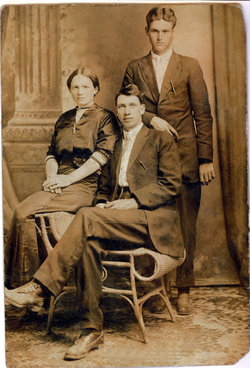 George Riley Riddle • Lucy E Etchison • James Perry Etchison Standing George Riddle's father was William Henry Harrison Riddle. Riddle's story was included in Turnbo's Fireside stories of the early days in the Ozarks. Links with Churches of God in Christ Kelly Campbell potentially reinforce the Boyd family connection. Nettie McCollister and Will Boyd were married by Kelly Campbell. Campbell was present for the 1911 Eureka Springs Meeting. Click here for more information. Nettie Luella McCollister BoydThe Boyds, Campbells, and other relations were dense family groups. More work is needed to unravel the numerous family ties. But it's clear that the Churches of God in Christ ministers had very strong connections through this short article. Jackson Vanover affiliated with the Assemblies of God from 1914-1915. CategoriesIf you have any information to help solve this historical inquiry, please let us know! This is taken from the following page of the Flower Pentecostal Heritage Center Website: Questions Concerning the Relationship between Bishop Charles H. Mason and the Church of God in Christ (white):Informal links between the Church of God in Christ (white) and Bishop Mason's organization did exist, and their leaders and members often crossed the color line to worship together. However, historians have been unable to locate documentation to show whether a formal connection existed between the two organizations that went by the name Church of God in Christ. The Church of God in Christ (white) issued its own credentials, elected its own officers, published its own newspaper (Word and Witness), and had its own system of short-term Bible training centers for ministers. Despite having similar names, the two groups organizationally seemed to have little, if anything, in common.
Discovery of the following two kinds of information might prove most helpful in discovering whether the two groups were organizationally related. 1. Railroad Clergy Bureau records, which might provide documentation whether Church of God in Christ (white) ministers claimed railway clergy discounts based on affiliation with Mason's group. 2. Evidence demonstrating organizational connections between ministers of the Church of God in Christ (white) and Mason predating the April 1914 formation of the Assemblies of God. It is possible that researchers - particularly those with significant knowledge of Church of God in Christ history - might be able to identify some Church of God in Christ (white) ministers on the ministerial rosters as having been associated with Bishop Mason. It should be noted that Mason's church did have white branches, such as those led by Memphis minister L. P. Adams and by William B. Holt. Many of these ministers and churches ultimately left Mason's organization, and some joined the Assemblies of God. However, these white branches apparently were formed after 1914 and had nothing to do with the formation of the Assemblies of God. By 1917, according to David Daniels' article in Portraits of a Generation (University of Arkansas Press, 2002), Adams appeared on Mason's roster of overseers for his organization. Please help solve this mystery! For more information, see: Darrin Rodgers, "The Assemblies of God and the Long Journey toward Racial Reconciliation," Assemblies of God Heritage 28 (2008): 54-58. If you possess any materials concerning the Church of God in Christ (white), please contact the Flower Pentecostal Heritage Center at [email protected]. "The annual interstate convention or encampment of the Churches of God in Christ of the Apostolic Faith people met on schedule time at Eureka Springs, Arkansas, July 10, and closed with joy on July 21.” Over “500 [people] were in attendance” at a meeting that birthed the Churches of God in Christ, and “the attendance far surpassed that of one year ago at the same place." “Glory and Unity at the Eureka Springs Camp,” Word and Witness, August 20, 1912, 1-2. Description: Tri-State Camp Meeting at Eureka Springs, Arkansas, July 25, 1912; large group photo taken in a natural amphitheater. Some identified.
First row: Myrtle Corbell (1st row, left, about 5 to left of baby carriage; she is holding a little girl with a bow in her hair & there is a young boy standing in front of her); Miss ___ Wooten (front row, center, in white dress, holding a Bible); Bill Hall (front row, right; 2 to right of Miss Wooten; he is holding his son, Naaman Hall); Ellen Hall (front row, right of Bill Hall; holding her son, Billy Hall); Second row: S. N. Hall (2nd row, left, just above lady with a baby carriage he has a dark suit and is holding a child); Miss Hughes (later Mrs. S. N. Hall) (2nd row, to right of S. N. Hall; she is also holding a child); Mrs. Blanche Giles (2nd row, center, holding a Bible, just above Miss Wooten); William E. Giles (2nd row, right of wife; holding baby Pauline Giles); Alpha E. Humbard (2nd row, right of William Giles); George Lee Hall (2nd row, right of A. E. Humbard); John H. James (2nd row, right of George Lee Hall); Third row: Hardy Mitchell (far left, between 2nd & 3rd row, wearing a white shirt); Efton Wiley (3rd row, 7 from far left, wearing a white shirt); Jo Ellen Wiley (child, 3rd row, right of Efton Wiley); Philip Wiley (child; 3rd row, right of Jo Ellen Wiley); Opal Wiley (3rd row, right of Philip Wiley); Willard Pope (3rd row, very center); Mr. _____ Wood (white-headed man with beard in 3rd row, to the right of Willard Pope); Ida Collins (3rd row, 6th from far right); A. P. Collins (3rd row, right of his wife); I. N. Watson (3rd row, 2 from far right); Fourth row: 'Mother' Mary Arthur (4th row, very far left; holding out a Bible); Fifth row: Fred Wilson (5th row, 3rd from far right); Sixth row: J. W. Welch (top row, 3 to right of tall man in center); W. T. Gaston (top row, 2 to right of J. W. Welch); J. A. Corbell (top row, 6 to right of W. T. Gaston). E. N. Bell, D. C. O. Opperman, Howard Goss, M. M. Pinson, and Frank Anderson, although present for the meeting, do not appear to be pictured in this large group photograph. |
AuthorHi! I am Kent. I love history and church history. While this website is especially dedicated to Assemblies of God history, I publish a lot of church history on this blog! Archives
March 2024
Categories
All
|
The Christian Evangel was published by J. Roswell Flower, an early leader of the Assemblies of God.
In 1914, after the Assemblies of God was founded in Hot Springs, Arkansas, E. N. Bell joined J. R. Flower in publishing it.
The Christian Evangel along with the Word and Witness were the official mouthpieces of the Assemblies of God in its formative years.
In 1916, the Word and Witness was discontinued, and the Christian Evangel became the Assemblies of God's sole weekly piece.
In 1919, the Christian Evangel was renamed the Pentecostal Evangel.
The purpose of this site is to reclaim some of the lost legacy of the Christian Evangel and tell some of the untold stories of the Assemblies of God.
In 1914, after the Assemblies of God was founded in Hot Springs, Arkansas, E. N. Bell joined J. R. Flower in publishing it.
The Christian Evangel along with the Word and Witness were the official mouthpieces of the Assemblies of God in its formative years.
In 1916, the Word and Witness was discontinued, and the Christian Evangel became the Assemblies of God's sole weekly piece.
In 1919, the Christian Evangel was renamed the Pentecostal Evangel.
The purpose of this site is to reclaim some of the lost legacy of the Christian Evangel and tell some of the untold stories of the Assemblies of God.
A podcast of this history project is coming in Summer 2024!
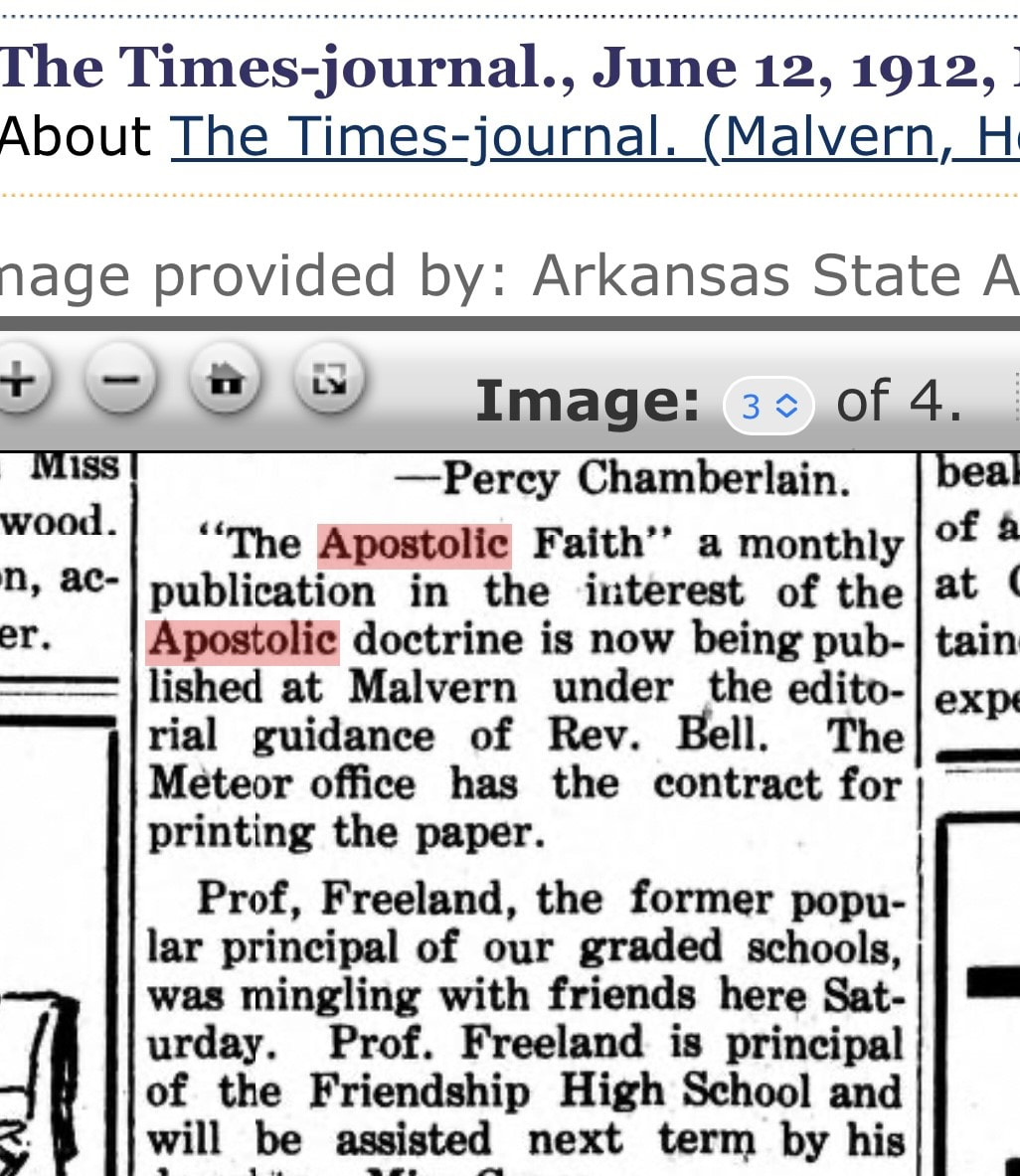


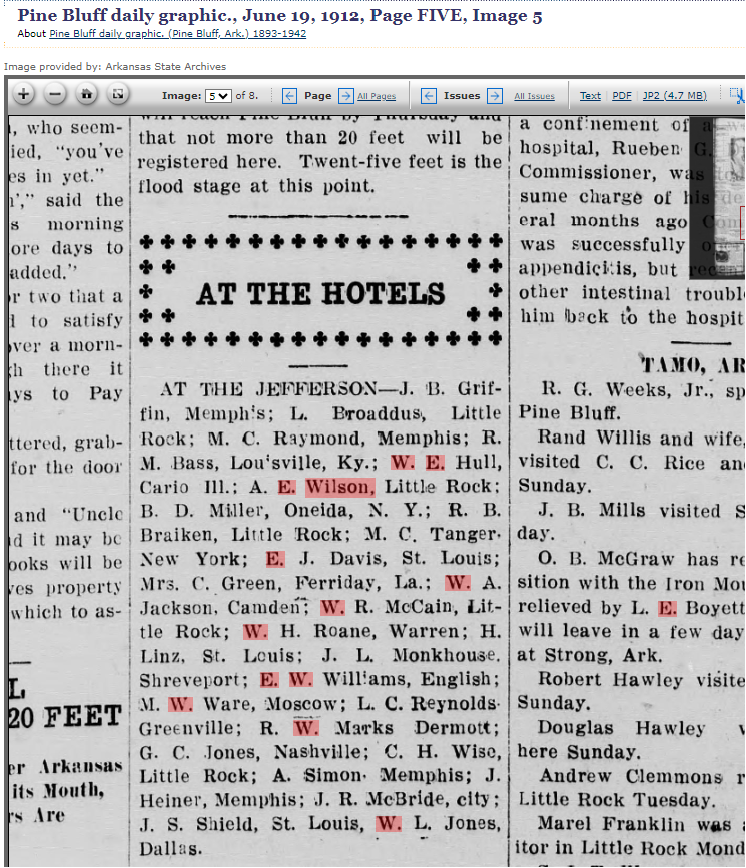






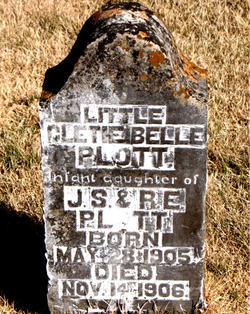

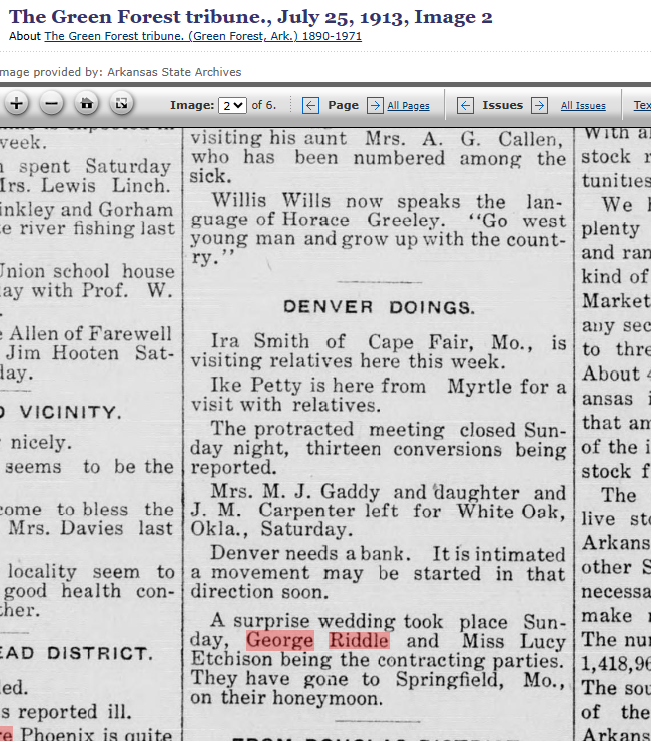

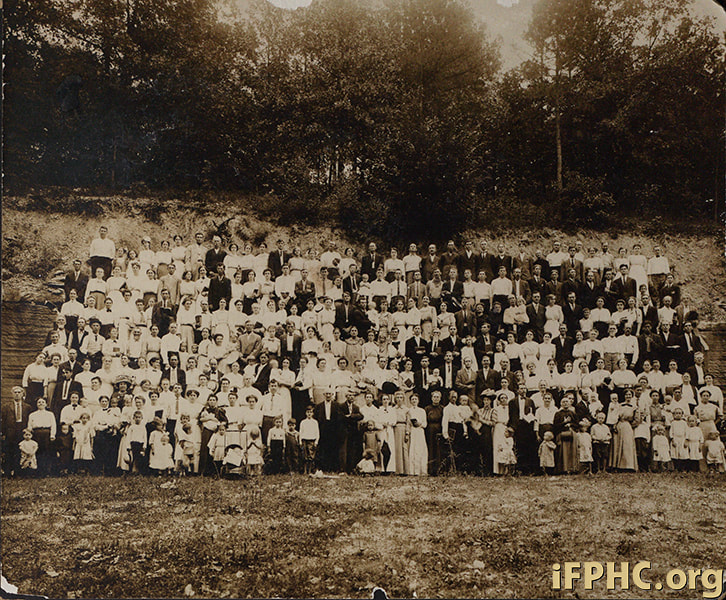
 RSS Feed
RSS Feed


